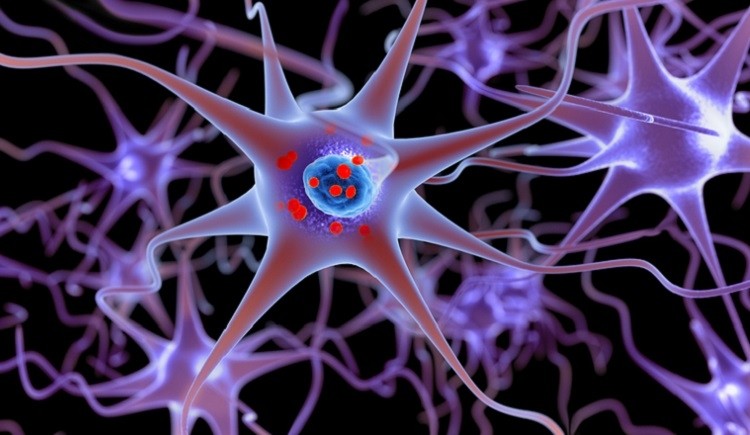Clinical Ink: demands of CNS studies call for advanced data solutions

Every trial is unique, with varying protocol design, patient populations, and data collection parameters. Central nervous system (CNS) studies often can be even more complex, considering the complicated nature of the conditions at their center.
Outsourcing-Pharma (OSP) recently spoke with Jonathan Andrus (JA), chief business officer of Clinical Ink, on the specialized needs of CNS studies, and how advanced data collection methods like direct data capture (DDC) can help trial teams better handle such clinical trials.
OSP: Could you share some of the ways in which CNS studies are more complicated/demanding than trials involving other therapeutic areas?
JA: CNS studies are more complicated and demanding as they often include elements of data collection that are outside of traditional and customary data fields. There is, often, the need for audio and video to be included along with the data collected in a CNS assessment; these audio and video elements help to show the way in which the patient interacts with and responds to the clinician and the way that they may work with and interact with a manipulative used in the execution of a CNS assessment.
Many times, having a video component coupled with the data is important in order to allow for remote review of the administration and interaction with the patient. Occasionally, photography is important, especially with CNS assessments that include the need for a patient to draw a diagram or another writing aspect.
Having solutions that bring together audio, video, photography, and data in one comprehensive tool is incredibly valuable. This enables sponsors, CROs and other clinical research professionals to be able to read, hear, and see all of these elements together.
Using systems that provide this, along with the ability to do summative scoring and other calculations directly in the system, is important to have to address the complications and demands of CNS studies.
OSP: What are some ways in which standard EDC solutions do not cut the mustard for CNS trials? What are some of the problems that these typical technologies create (or “fail to solve”) for CNS trial teams?
JA: So, I think if you think about my answer to the question above around all the different things that complicate and create the demand that is inherent in CNS studies, EDC solutions don't measure up. They don't rise to the level that is needed for data collection and they require data to be collected in secondary or tertiary documents because EDC solutions are not structured and configured in a way as to allow for the clinical collection of that data.
It is very difficult to collect audio, video, and photography, using EDC solutions and be able to embed them or include them with the patient data. The typical technologies available today end up creating more work on the part of the clinical research site because the site has to do duplicative work.
Sites have to capture these data somewhere and then at some point, once they have time, sit down and transcribe these data into an EDC system. Sites may have to scan drawings — upload images of different drawings that were done — as opposed to simply being able to use camera functionality available on our tablets, to be able to take actual images of them and include them directly with the form.
So the problems that come along with typical eClinical technologies include creating many complications for the site because they have to do extra work in order to collect audio, save that separately, collect photographs if needed, videos, and somehow get them sent along with the actual analysis data that needs to be collected. So, all of that together just doesn't cut the mustard for CNS and it also really fails to solve the challenges that are brought forth within CNS studies.
OSP: Please talk about the ways in which DDC solutions improve upon EDC. Feel free to mention time savings, boosted data quality, improved patient experience, real-time data access, etc.
JA: So, with a direct data capture solution or DDC, you're collecting the data at the time of the patient visit, including clinician-administered scales. You also have the ability to hand the tablet to the patient for them to complete any patient-facing assessments related to the CNS study. This allows them to create their own unique PIN, permitting them to complete the assessment in a way that ensures no one else was able to complete it on their behalf.
Being able to hand the tablet to the patient improves the patient experience as the patient can use a stylus or their finger to complete the needed assessments. This includes allowing them to do drawings or other cognitive assessments directly on the device, improving the experience for the patient, for the site personnel, and for the sponsor as they get real-time access to the data and drawings as soon as the patient finishes their visit.
OSP: How might DDC lead to an improved patient experience?
JA: Patients can enter data directly into DDC without having to complete something on paper and then hand that paper to the clinician who then, in turn, needs to somehow get that included in with the data. And, of course, providing real-time access to all parties (including sponsors and CROs) that are now able to get access to these data, often before that patient is even in their car heading home.
The other advantage that DDC provides over EDC is that you now have the ability to collect data at the patient's home, if needed. Often in CNS studies — especially Alzheimer’s disease, post-traumatic stress disorder, and major depressive disorder studies — patients may be uncomfortable or incapable of actually leaving their home. DDC (in offline or online mode) can be used with the patient in the comfort of their own home, which is not feasible with EDC.
With an at-home approach the patient’s overall experience is improved as they can continue in the trial from the comfort of their home. This approach can improve the patient experience in the sense that the coordinator or the research site coordinator can now travel to the patient's home and improve their overall experience and retain them longer in the study because the patient is not having to travel to the site. This approach improves the experience in the sense that they're still engaged and involved in the study, but they can do so with the clinician actually coming to them to collect the data.
OSP: What do you mean by “purpose-built” DDC applications?
JA: A purpose-built DDC application is purpose-built in the sense that every protocol is unique, distinct, and different. Because of that, DDC applications really allow for creative license to be brought toward the design of the study; sponsors can create data collection forms that are identical to paper-based forms and make the learning curve on the part of the site very low.
EDC systems cannot touch that because they are modular-based and are not conducive to creating entry forms that look and feel like paper. EDC also struggles with allowing for the types of images and videos that might be needed in a CNS study design. EDC does not have the ability to use electronic inking directly on the screen by the clinician or the patient.
DDC applications allow for purpose-built tools to be able to use an electronic stylus to be able to draw on different images, to do different drawings on the forms themselves and allowing for many different flexible designs that are critical in CNS studies.
OSP: Are there any challenges associated with implementing a DDC solution to replace EDC?
JA: I do not know if “challenges” is the right word. I think that once sites get used to being able to collect data directly into the DDC tool and not have to transcribe — once they have a couple of patients’ worth of data under their belt — the learning curve goes away.
It is important that vendors that provide DDC solutions like this have fully dedicated technical support that's available 24/7/365 to be there to support sites and patients. It's important that the training programs and the educational programs that you have in place are such that you can do your baseline training with the sites, but that the sites also have online training tools and videos that they can reference and watch as refresher training.
The other important thing with solutions like DDC, in order to avoid some of these learning hurdles, is to have smart forms. Having edits and logic that provide guidance in real time, pop-up boxes and instructional text that are accessible directly from the forms themselves without them having turn to the protocol or go to other ancillary documents, is critical.
In years past, with traditional EDC systems, often what had to be created and provided to the sites was something called a case report form (CRF) completion guideline. With direct data capture, you can embed all of the completion guidelines and all of the instructions to help sites out directly within the forms. No CRF completion guidelines are needed.
OSP: Is there anything else you’d like to tell OSP readers about that we didn’t touch upon above?
JA: One thing we did not touch on above is the ability to use direct data capture in a telehealth or telemedicine approach. Often, CNS studies require complex neurological cognitive scales and assessments to be administered by trained raters or trained principal investigators.
Having the ability or flexibility to choose the right modality — whether it be on-site data collection from the patient at home, data collection from the patient by the clinician, or over telehealth or telemedicine — is critical in CNS studies. This enables questions to be asked, audio/video to be collected, and especially during this pandemic season that we're living in now, provides sponsors with options for how they manage and run their clinical trials.
The ability to have those telehealth or telemedicine tools on the tablet itself, to be able to connect with the patients, and to be able to go through the assessments interactively with them by entering data directly into the tablet, is absolutely critical and fundamental to running successful CNS studies. Now, and into the future, having many flexible options for all of your studies is vitally important to arriving at confident decisions, faster.

















